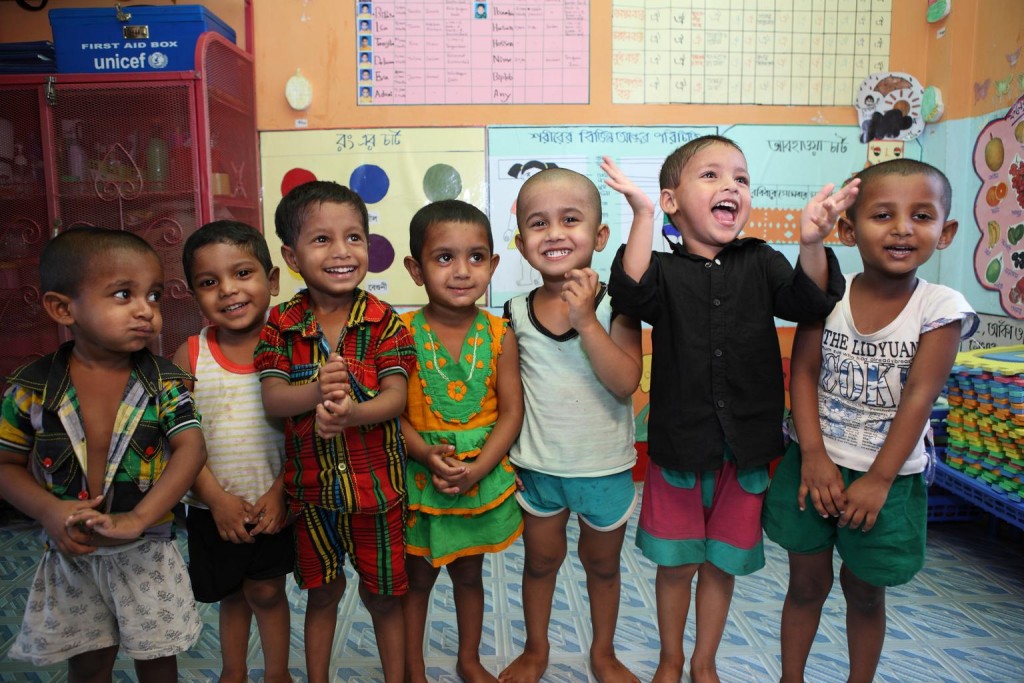As 25th anniversary of the Convention on the Rights of the Child approaches, UNICEF asks: Is the world a better place for children?
2014-09-26
© UNICEF/UNI116822/Friedman-Rudovsky
NEW YORK/ HONG KONG, 26 September 2014 – Looking ahead to the 25th anniversary of the Convention on the Rights of the Child (CRC) on November 20, UNICEF today released new trend data and essays that ask a critical question: “Is the world a better place for children?"
Excerpts from the essays:
Children’s Rights, Equity, and our common future
- Anthony Lake, UNICEF Executive Director
During the 25 years since the Convention on the Rights of the Child was adopted, the world has taken action in every region and virtually every nation on earth. The mandate has produced significant results, helping to save and transform the lives of millions of children. Yet we cannot claim that children’s rights are being upheld when 17,000 children under the age of 5 die every day largely from preventable causes, when girls are kept home while their others go to school, or where mothers living in a remote community cannot access a simple vaccination for their children. We have a responsibility to find new ways of tackling the challenges not yet overcome, to reach the children not yet reached and to put equity and children’s rights at the centre of an agenda for action for all children.
Is the world a better place for children?A statistical analysis of progress since the adoption of the Convention on the Rights of the Child

The 25th anniversary of the adoption of the Convention on the Rights of Child serves as an opportunity to celeate many achievements, from declining infant mortality rates to increases in primary school enrolment, among others. Yet millions of children continue to have their rights violated on a daily basis. Some 6.3 million children under 5 years old died in 2013, largely from preventable causes. The goals of universal primary education and gender parity in primary and secondary education have not yet been attained. A disproportionate number of children around the globe continue to live in extreme poverty. Nearly one in four children is engaged in child labour in the least developed countries, and child marriage is still common, especially in South Asia and sub-Saharan Africa. Birth registration levels have hardly increased. The rights articulated in the Convention apply to every child in the human family. We must reach out to the poorest and most vulnerable, closing the equity gaps so that progress is universally shared.
Much has been achieved for children during the 25 years since the adoption of the Convention on the Rights of the Child. But the agenda for child rights is far from complete. Holding States accountable for fulfilling their obligations under the Convention may be seen as the overall challenge to the realization of children’s rights. It is important that each State develop systems of monitoring, measurement and evaluation to fulfil its obligations to all children. A recent positive development is the adoption of the Optional Protocol on a communications procedure, which allows children to submit complaints to the Committee on the Rights of the Child if their rights have been violated by the State, when all domestic remedies have been exhausted.
The Genesis and spirit of the Convention on the Rights of the Child
- Kirsten Sandberg, Chair of the Committee on the Rights of the Child and Professor at the University of OsloDelivery on the promise for children is long overdue
- Kevin Watkins, Executive Director of the Overseas Development Institute

© UNICEF/UNI160038/Kiron
The Convention on the Rights of the Child has prompted major advances for children. Yet for all its achievements it remains a promissory note that has come back marked ‘insufficient funds’. Ultimate responsibility for upholding the Convention rests with governments – and holding governments to account requires a mix of formal accountability and political mobilization. The Committee on the Rights of the Child can turn the spotlight on policies that are corroding the intent of the Convention; it can raise the visibility of vulnerable children and provide a point of engagement for civil society in the process. More effective enforcement of child rights will require an uncompromising commitment to challenge those responsible for rights violations
- Jody Heymann, Dean and Distinguished Professor of Epidemiology, University of California Los Angeles Fielding School of Public Health, and Amy Raub, Senior Research Analyst, WORLD Policy Analysis CenterThe Convention on the Rights of the Child: What it would mean to fulfill its potential
The global impact of the Convention on the Rights of the Child relies on the actions of individual countries. Through their constitutions, laws and policies, an overwhelming majority of countries have begun to realize some of the key commitments embodied in the Convention at the national level. These include both fundamental rights (to health, education and an adequate standard of living) and fundamental protections (from economic exploitation, from early marriage, and for children with disabilities). Yet critical gaps remain. Accelerating the pace of change will require taking advantage of available information and communication technology to provide actionable, real-time information to citizens, civil society and government leaders – and all those who can act on behalf of the world’s children.
About the UN Convention on the Rights of the Child
The Convention on the Rights of the Child explicitly recognizes the universal rights of all children. It is the most rapidly and widely ratified international human rights treaty in history and has inspired changes in laws and practice that have improved the lives of millions of children in every region of the world.









